
I get asked about using oils with pets a lot! If you don't have pets, I would be willing to be that you know others who do and how awesome would it be if you could offer them some natural solutions to help their furbabies thrive?
I'm going to break down a class I have on this topic, spreading it out over the next two-three weeks Let's get to it!
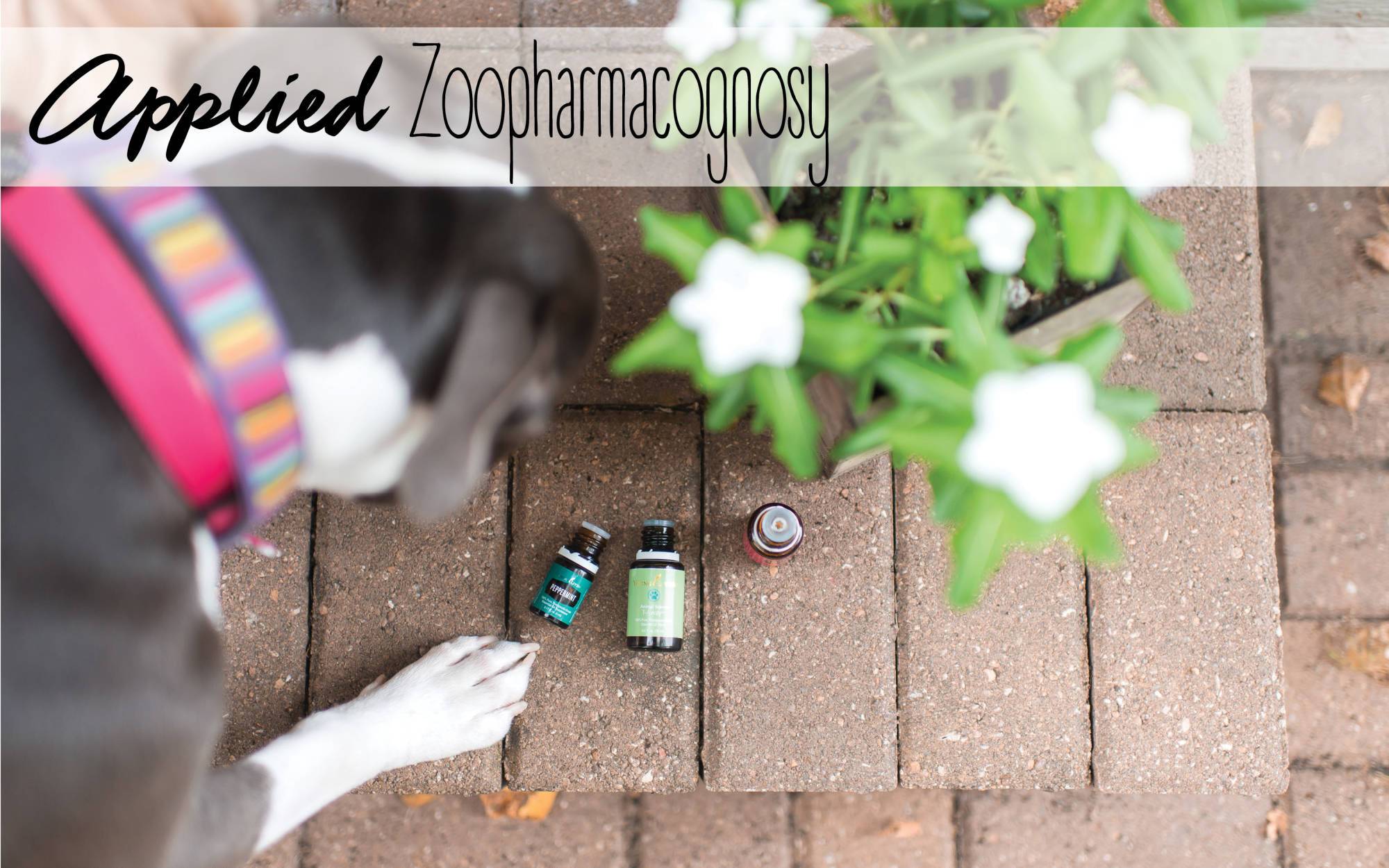
Certain texts dating back hundreds of years reference using plant extracts on animals. Dr. Louis Sevelinge generally gets credited with developing veterinarian aromatherapy in the 1940s. In 1993, the French veterinarian Nelly Grosjean wrote the first book dedicated to the use of essential oils with animals.
While Dr. Louis Sevelinge and Nelly Grosjean get a lot of recognition in the “oils and animals" area, Caroline Ingraham began extensively studying the use of essential oils alongside veterinarians and developed the incredibly safe and effective method known nowadays as Applied Zoopharmacognosy . (Translation from Greek roots: animal-medicine-knowledge.) This method states that animals have an innate ability to know what they need for health.
How does Applied Zoopharmacognosy work? When working with essential oils, we use an animal's natural instinct and allow the animal to choose what products they prefer. This method is safe, effective, and simple, and it strengthens the bond between you and your animal.
What does this look like in practice? You allow the animal to choose by keeping the lid on the essential oil and let them smell it. Their "choice" or a positive sign looks like prolonged sniffing, interest, or even licking indicates they like the oil and it can be used.
Here are some things to keep in mind:
- A negative choice will be completely ignoring it, barely giving it a sniff, or actual avoidance.
- Do not force a product on an animal as it can cause stress.
- Adverse effects may result by forcing essential oils on an animal.
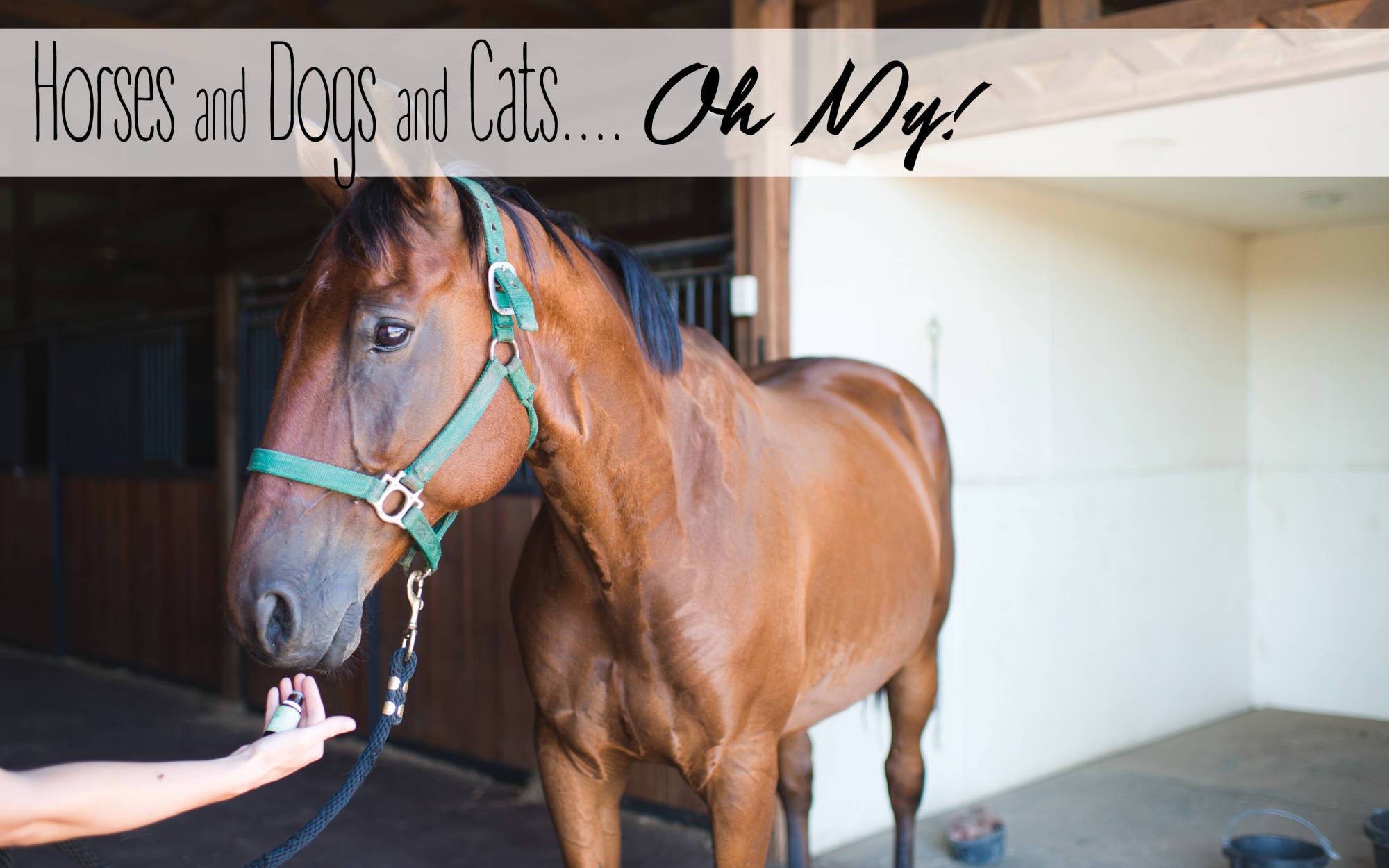
Horses
Horses tend to respond very well to essential oils since they are herbivores and have metabolic pathways to break down most oils. They also tend to prefer the inhalation and licking methods used with oils.
Dogs
Dogs also tend to prefer inhalation and licking methods.
Cats
Cats don't have metabolic pathways to break down most essential oils. Essential oils can still be safe to use. Be sure to let them choose their own oils. Cats are even more discerning than dogs. This means your cat will probably tell you exactly what he/she wants. If you have any concerns you can consult your veterinarian.
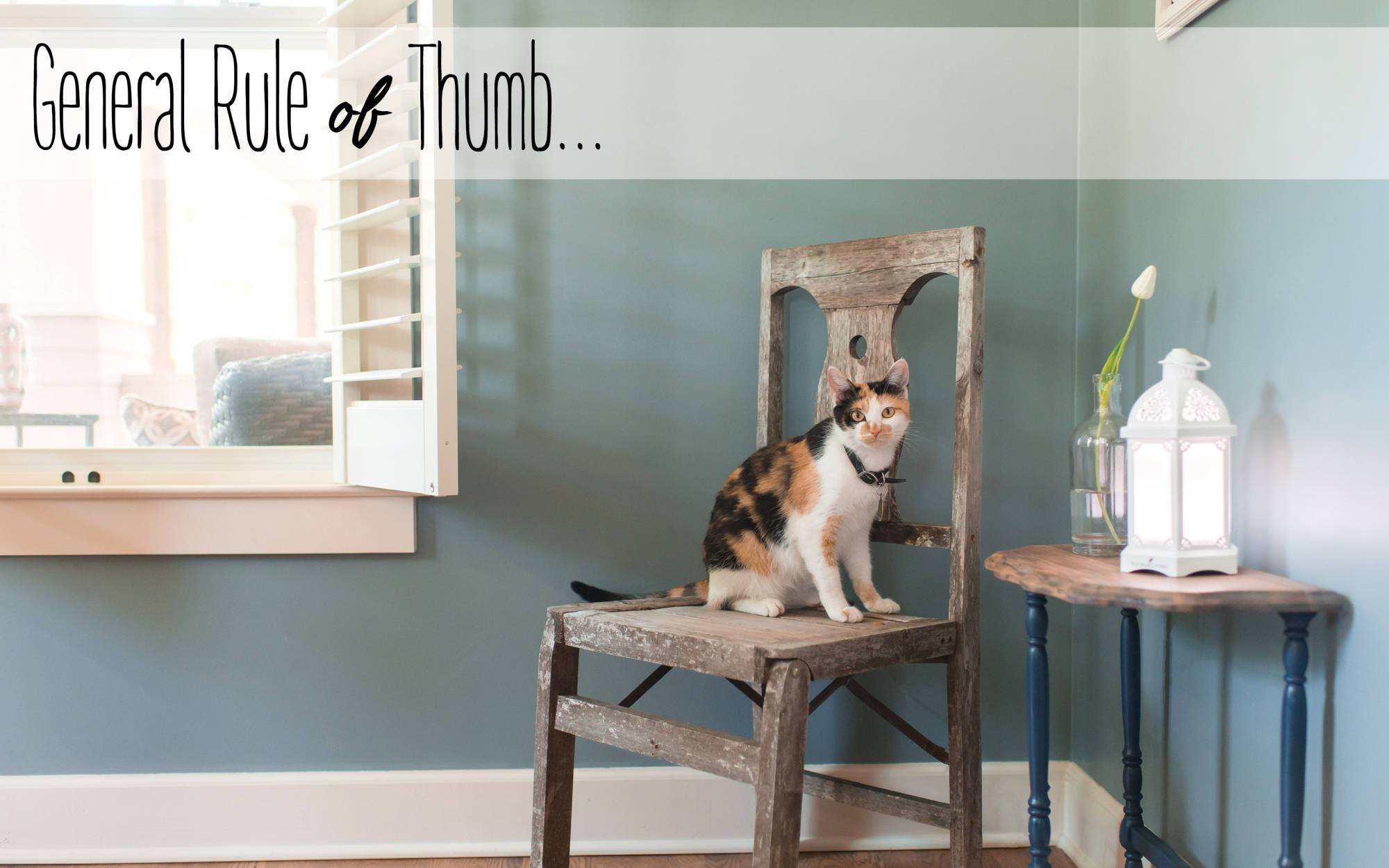
Animals, due to all their hair follicles, have an increased rate and amount of absorption, so use plenty of carrier oil when applying any oil.
Err on the cautious side. Cats should have carrier oil dilution, around 8 drops of carrier oil to 1 drop of EO, and dogs under 25 pounds should have 5 drops of carrier oil to 1 drop of EO. You can always dilute further in the beginning.
LISTEN TO YOUR ANIMAL.
If you're diffusing or using oils for yourself while your pets are around, make sure there is an open door or window so they can leave.
Do you know any cat that will stay put when it doesn't like something going on? I didn't think so. With all the hype going around about essential oils and cats, I understand people are very sensitive and cautious. I'm glad you are!
The three most important things when being cautious on behalf of your pet while using oils are to check the QUALITY of oil (not all are created equal), let your pet CHOOSE, and provide an OUT.
Check out Young Living's Seed to Seal promise which enables you to know that you're getting the best oils on the planet!
Concerned about the safety of oils around your pets? Here are some helpful links:

Next week, we'll share some great furbaby recipes and practical ways to use oils with our pets! Be sure to check back then!
Our Mission: Love Others Well & Empower Them to Do the Same
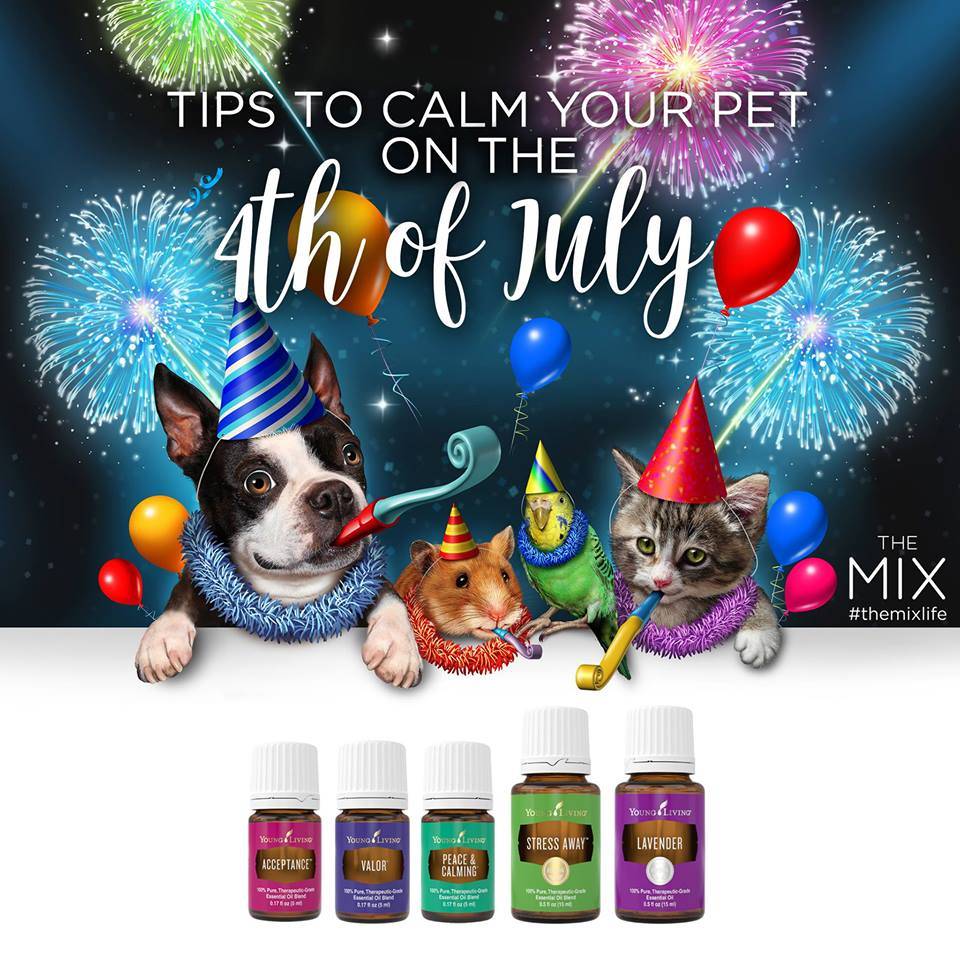
Our family has done a lot of volunteer work with our local animal shelter and loved sharing that experience together. Did you know that July 5th is one of the busiest days of the year for animal shelters all over the country because the most number of pets get lost on the 4th?
The reason is because pet owners sometimes underestimate how their pets will react to the loud fireworks going off around them and for those pets that are afraid, their instinct is to run and try to get away from the loud noises. If they are not restrained or on a leash, they could end up lost and may even get hurt while on the run.
Regardless of whether or not your pet has shown any sign of fear toward fireworks before, you just never know how they will react. Not only that, there are other hazards that can harm pets during the festivities.
Here are a few practical tips from PetFinder to help you keep your furbabies safe on the 4th:
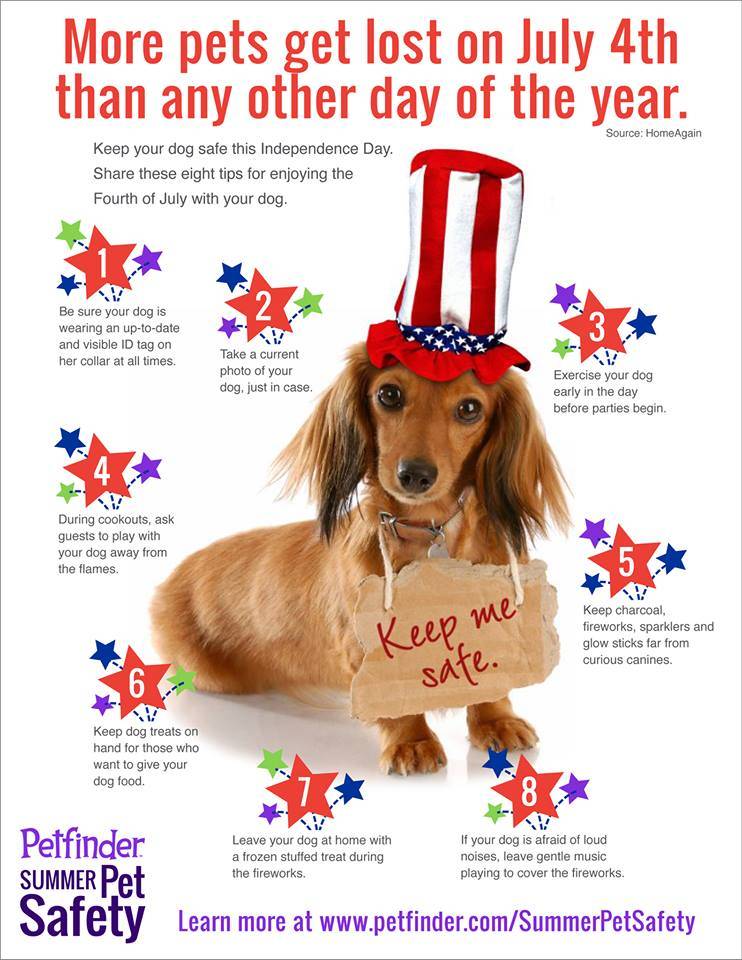
From an oily standpoint, there are a few different ways that we help keep our furkids happy and calm during 4th of July week. First, we make sure that we have our diffusers going in the evening to help keep our dogs relaxed and calm during the festivities that happen on multiple nights. We also put a drop or two of our chosen oil (usually Peace & Calming or Lavender) onto our palms, rub them together, then stroke their fur. We may instead rub a bit on their paws or the outsides of their ears. We also do this during thunderstorms to help calm our furbabies during a time that could otherwise be stressful to them.
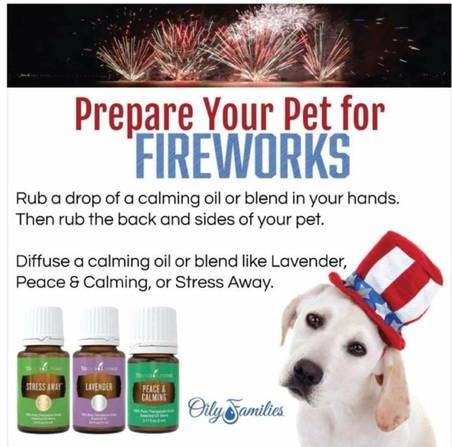
Here are a few other essential oils that your furry friends may enjoy:
Stress Away
Acceptance
Valor
Try some different combos and see what works for you and your pets. If applying topically, do your research on dilution ratios, especially for smaller dogs. And if your furbabies don’t have to be outside on the 4th, please let them stay inside!
Acceptance
Valor
Try some different combos and see what works for you and your pets. If applying topically, do your research on dilution ratios, especially for smaller dogs. And if your furbabies don’t have to be outside on the 4th, please let them stay inside!
Happy 4th of July, one and ALL!!!
(Thank you to Danyelle Ho for sharing some of this information in The Mix, FB group.)
Our Mission: Love Others Well & Empower Them to Do the Same










